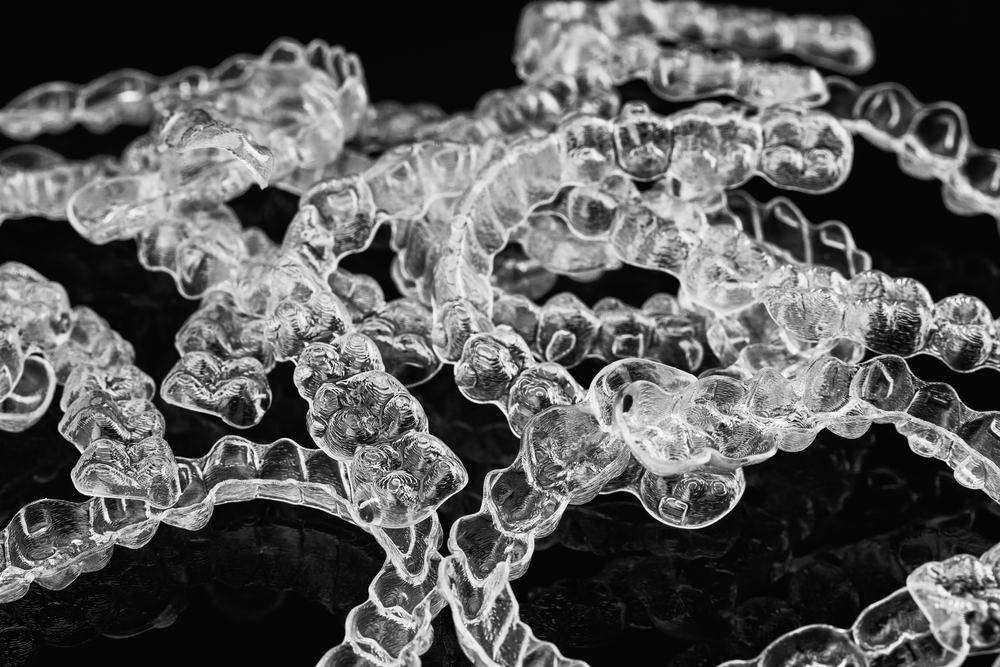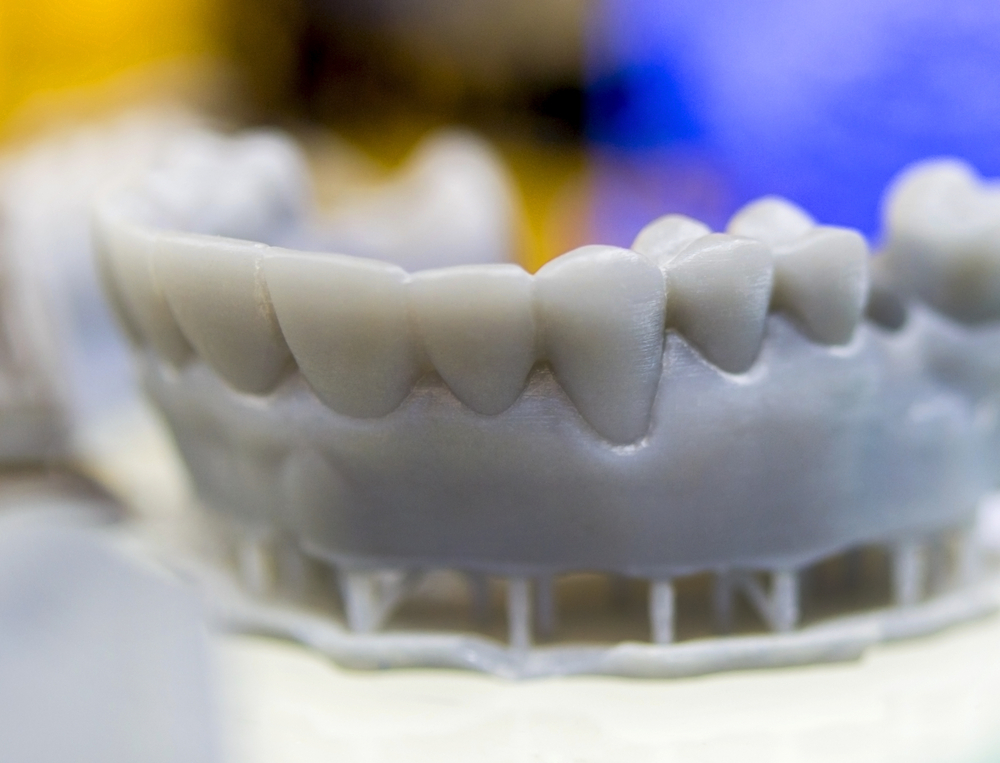
3 Applications for 3D Printing in Orthodontics and Oral Devices

The traditional method used to produce oral devices is time-consuming and inconvenient for patients. It is a multi-appointment process that involves creating manual, oral impressions and outsourcing them to a dental lab for fabrication. Device turnaround can take 2 to 4 weeks to complete. Dentists can accelerate the process by switching to a digital workflow that utilizes an intraoral scanner and 3D printer. Intraoral scanners eliminate the need for manual, oral impressions, and 3D printers produce oral devices more quickly than conventional processes.
Clear aligners, retainers, and dental molds are the highest volume applications for digital dentistry. Related oral devices, like night guards and dental restorations, also benefit from a digital workflow. Dental professionals currently leverage 3D printing in orthodontics and oral device creation in three significant ways.
Application #1: Direct Printing Retainers and Night Guards
The conventional method to create retainers and night guards is proven uncomfortable for patients. The molding process often makes patients gag, and dental labs take weeks to return the device. Some dental professionals use an intraoral scanner instead of taking an impression and outsource to lab techs who build a physical model from the file used to produce a retainer.
When outsourcing to a 3D printer smart factory or dental lab with 3D printing capabilities, product turnaround time is reduced from weeks to a few days. For practices with in-house printers, retainers and night guards can be produced in as little as three hours, delivering a custom-fit device in a single visit. Soon, 3D printing will eliminate the need for a physical model, providing a fully digital process.
Application #2: Creating Molds for Thermoforming Clear Aligners

Thermoforming is a method used to create various oral devices, including today’s increasingly popular orthodontic treatments, clear aligners. Similar to traditional retainer production, creating clear aligners begins with either taking impressions or intraoral scans. The CAD file, representing a 3D model of the patient’s teeth, is made from the dental impression or the intraoral scan. The orthodontist then uses software to create a multistage treatment plan to align the teeth. The resulting CAD files for each stage of the treatment plan are sent to a lab to create the physical 3D dental models for thermoforming aligners. Aligner material is then heated and formed over the physical 3D dental model for each stage. After thermoforming, the dental model is manually, or CNC cut, polished, and sent back to the orthodontist.
Depending on patient needs, the number of required physical models can range from six to 48 per treatment, and each treatment plan takes weeks to produce. Modern 3D printers for dental can directly print aligners from the CAD files for the treatment plan, eliminating the need for 3D dental models and thermoforming. Orthodontists can shorten the turnaround time, reduce third-party costs, and gain control of workflows by incorporating a 3D printing solution into their practice. Or, they can outsource to labs with 3D printing capabilities, shortening the production time.
Application #3: Creating Tooth Replacement Materials
3D printing can also extend to restorative dentistry, making restorations and dental tools for procedures. Dental restorations are generally outsourced to another dental lab or made with an in-house ceramic milling machine. Advancements in materials used by 3D printers enable 3D printing machines to create a wider variety of dental products than milling devices, and in a fraction of the time.
Today’s 3D printers can create the following appliances:
- Dental Crowns and Bridges: Crowns and bridges are the most common restorations made with ceramic and milling machines. 3D printers now use resins that exceed the properties of ceramic materials and create temporary crowns and the substructure of PFM (porcelain fused to metal) crowns.
- Dentures: Customarily, dentures are created with a labor-intensive, hand-crafted process that requires multiple patient visits. 3D printing streamlines denture production. With a completely digital workflow, 3D printers enable the production of a denture apparatus in one visit. 3D technology applies to both permanent and try-in dentures.
- Surgical Guides: Also referred to as stents, surgical guides are increasingly a standard tool used during implant procedures. Surgical guides reduce the duration of surgery and the risk of complications. The accurate scanning technology used in conjunction with precise 3D printers ensures surgical guides are made correctly.
3D Printing in Orthodontics and Oral Device Production: Improve Your Process
Oral care professionals using 3D printers now have access to greater control over their workflow, with faster turnaround times and versatility. Whether through a local facility that offers dental 3D printing or through an in-house machine, additive manufacturing can improve orthodontic practices and oral device production.
To learn more about the role of 3D printing in orthodontics and restorative dentistry, visit our contact page or call (650) 336-0888.

